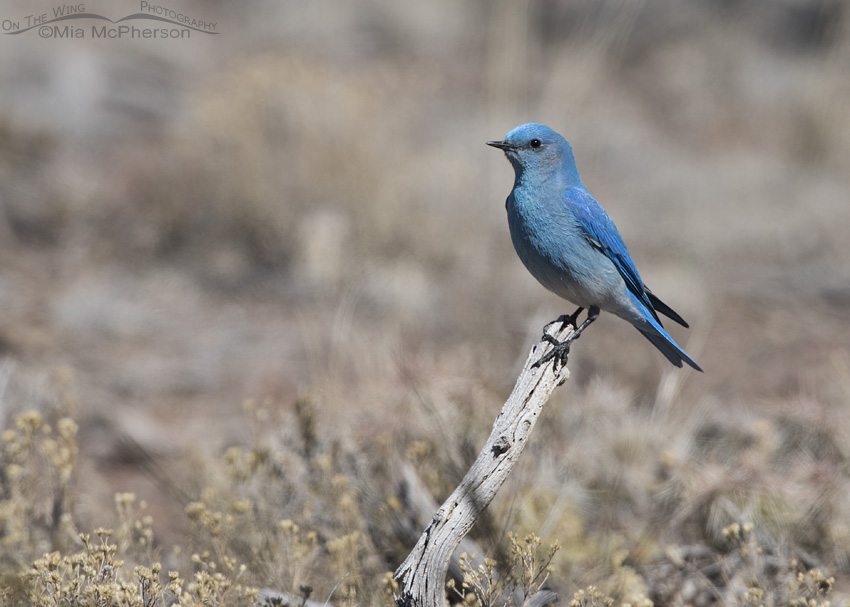 Wayne County Mountain Bluebird male
Wayne County Mountain Bluebird male
While on my recent trip to southern Utah’s Wayne County I was able to photograph a few Mountain Bluebirds including a female up close but in poor light and this male perched on a branch on the ground. In the bright light this male seemed to glow compared to the earthy tones of the high desert habitat.
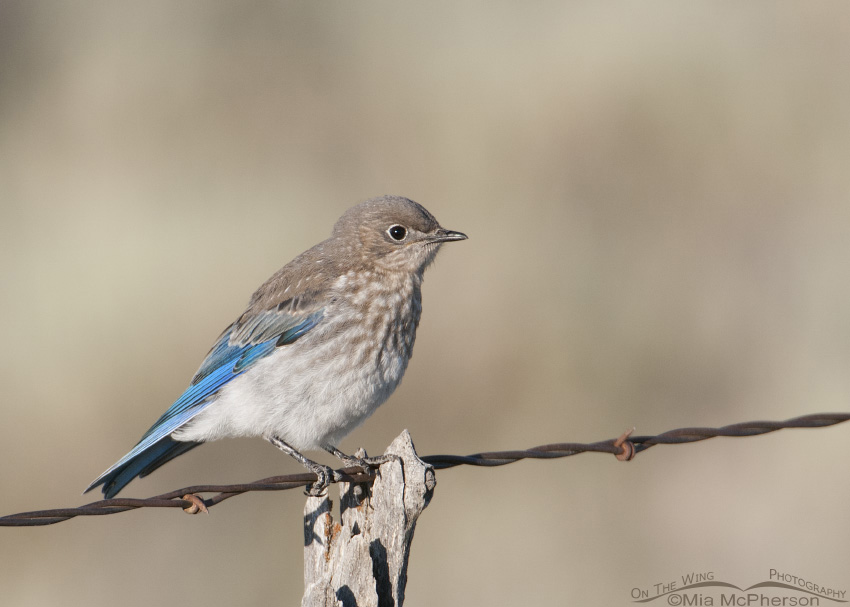 Centennial Valley juvenile Mountain Bluebird
Centennial Valley juvenile Mountain Bluebird
This is a juvenile Mountain Bluebird I photographed in July of 2013 in the Centennial Valley of Montana. This juvenile probably fledged a few weeks before I photographed it perched on a wire fence early in the morning.
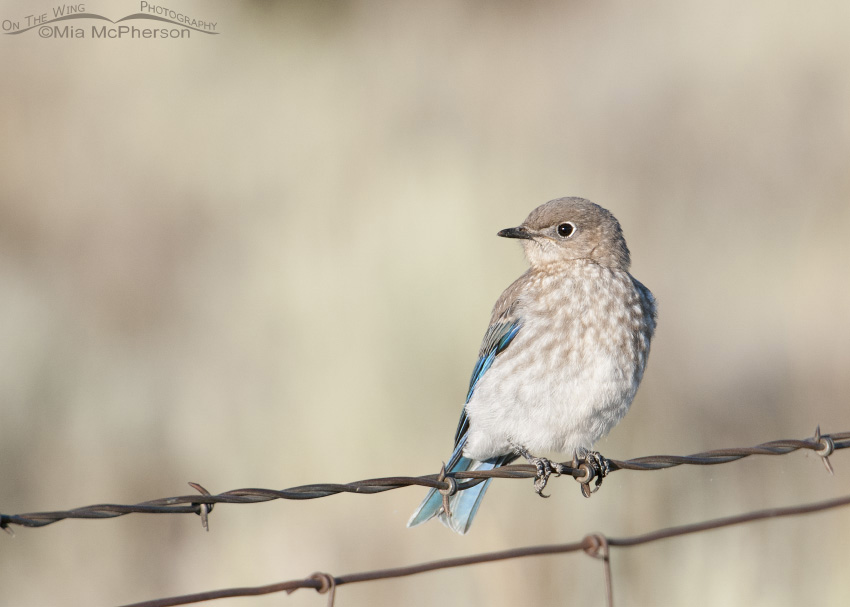 Perched juvenile Mountain Bluebird
Perched juvenile Mountain Bluebird
This immature bluebird is in its juvenal plumage stage. At this age the males and females look similar but the wings of the females would appear duller or slightly greenish so it is my best guess that this juvenile is a young male.
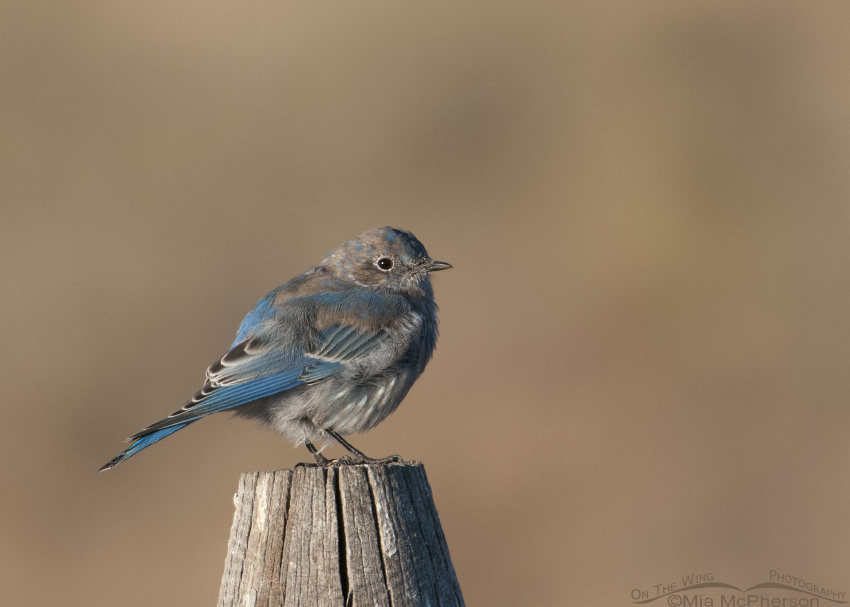 Juvenile male Mountain Bluebird molting into basic plumage
Juvenile male Mountain Bluebird molting into basic plumage
Two months later, in September, in the same area of the Centennial Valley I was able to photograph a juvenile male Mountain Bluebird molting into basic plumage, or Basic 1 plumage. I kind of like this calico look!
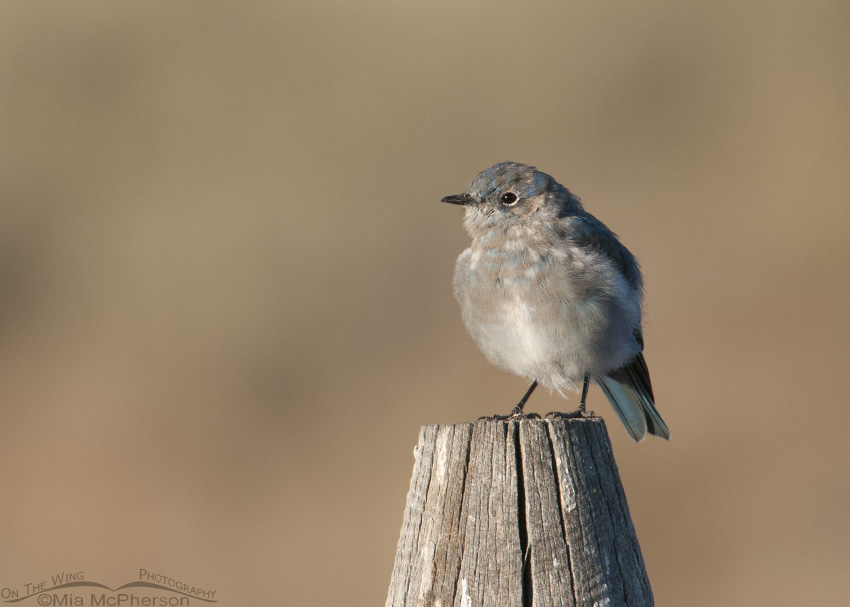 Molting juvenile male Mountain Bluebird
Molting juvenile male Mountain Bluebird
The juvenile bluebird still shows some of the juvenal plumage and by winter it should have completed the molting process. Before then though it would have migrated south for the winter.
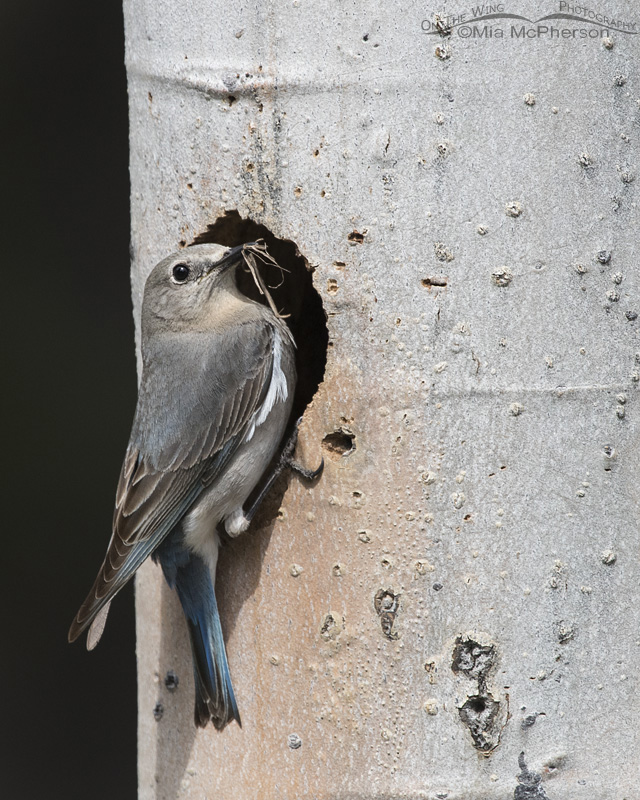 Female Mountain Bluebird with nesting material
Female Mountain Bluebird with nesting material
Female Mountain Bluebirds are much duller more gray with hints of blue on the back, tail and wings. This female was photographed in May of last year in the Targhee National Forest of Idaho at a natural nesting cavity. There was a Northern Flicker also attempting to nest in this cavity.
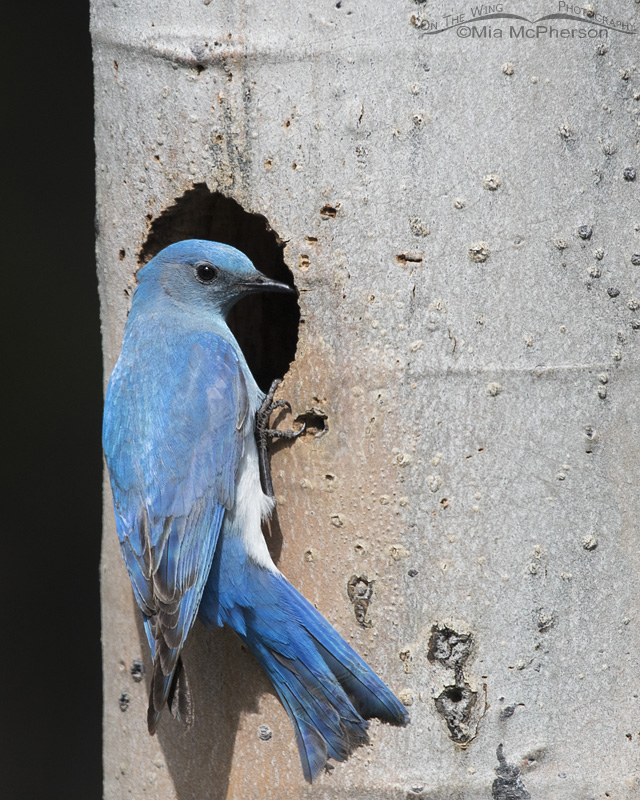 Male Mountain Bluebird at Nesting Cavity
Male Mountain Bluebird at Nesting Cavity
This male is the mate of the female show in the image above at the same nesting cavity and shows the sky blue colors I am so familiar with seeing in male Mountain Bluebirds. Both the male and female are in what is called Definitive Basic plumage, or adult plumage. Unfortunately this tree was chopped down so the bluebirds, wrens, flickers, swallows, nuthatches and sapsuckers who could have nested there were forced to find new nesting locations.
These images from different times of the year show Mountain Bluebird plumage development stages from not long after fledging to adulthood. Each and every time I am in the field photographing birds I seem to learn something new or fascinating.
Life is good.
Mia
Click here to see more of my Mountain Bluebird photos plus facts and information about this species.


Absolutely intriguing. Thank you.
VERY NIIIIIIIIICE SERIES MIA… ;-)))
Beautiful photos. I love the splotchy molts of juveniles.I have watched many birds molt and as I watch I wonder how feathers decide to molt in what order.
What a wonderful lesson! Thanks, Mia!
Great series. Around here, we have a lot more Western Bluebirds, so it’s nice to see the differences. Thanks, John
Wow – what great photos – and a tremendous reference, Mia! Thank you for sharing these photos – they will be a great help in correctly identifying and attributing these bluebirds. I have already saved this link for my field identification.
In every stage, they’re so incredibly beautiful!!! It’s almost as of as they flew, bits of the sky stuck to them. I remember the first time I saw one….didn’t know at the time they existed…saw several atva time–in a bush. I couldn’t believe my eyes! A beautiful blue-sky day and small bits of that sky fluttering around right in front of me! This os a wonderful post.
Gorgeous images, Mia. Love the commentary also.